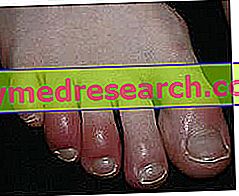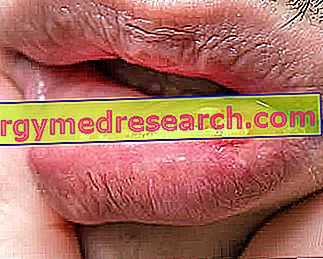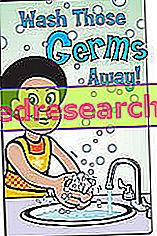Watch the video
X Watch the video on youtubeGenerality
The gelone is a skin reaction caused by sudden heating after exposure to cold temperatures. Also known as erythema pernium, the classic gelone manifests itself as a painful inflammation of the small blood vessels present in the skin.

Causes
The chilblains represent the result of an anomalous cold reaction of the body followed by a sudden warming. Low temperatures cause vascular constriction, while hot ones induce vasodilation. If the transition from cold to warm is abrupt, a dilation of the capillaries may occur faster than that of the large blood vessels; this can lead to the leakage of blood components into the surrounding tissues. The phenomenon determines the onset of skin inflammation in the affected area, which in turn is associated with the typical symptoms of chilblains.
Symptoms
To learn more: Symptoms Geloni
The symptoms of chilblains generally appear shortly after exposure to cold. First of all there is a burning and itching sensation, usually in the extremities of the body: ear lobes, nose, heels, toes and hands. Subsequently, the symptoms worsen if the individual enters a warm environment.
Signs and symptoms of chilblains may include:
- Redness, swelling and itching localized on the skin, often on the feet or hands;
- Burning sensation;
- Changes in skin color, from red to dark blue, accompanied by pain;
- Possible formation of blisters and ulcers.
The lesions can be single or multiple, that is, more chilblains can remain circumscribed or joined to form an extended erythematous area. If the patient avoids further exposure to the cold, the chilblains usually disappear within 1-3 weeks, although these can recur seasonally for years.
Some people do not need to go to a doctor. However, if the pain becomes intense and the skin in the affected area shows signs of an infection, the intervention of a specialist can help treat the disorder more effectively.
Risk factors
The factors that can increase the risk of chilblains are:
- Exposure of the skin to cold, usually associated with humid and temperate climates; chilblains are less common in countries where temperatures are more extreme: air is drier and people have adjusted their living and clothing conditions.
- The time of year : the chilblains are more frequent from the beginning of winter to spring.
- Low body weight or poor nutrition (example: anorexia nervosa).
- Family trend .
Some groups of people are more sensitive to temperature changes and to chilblains, if exposed to cold:
- Female individuals;
- Smokers (nicotine constricts blood vessels);
- Patients with peripheral vascular disease due to diabetes or hyperlipidemia;
- Patients with connective tissue diseases, in particular lupus erythematosus, systemic sclerosis or in association with Raynaud's phenomenon (excessive vasospasm of the small blood vessels of the fingers).
The side effects of some drugs can cause the constriction of the small blood vessels. This can be enough to make the patient inclined to develop recurrent chilblains. Beta blockers, for example, can produce this effect.
Complications
Chilblains can cause complications especially if blisters arise, from which ulcers and scars can develop. Infections of the lesions can cause serious damage if neglected. Chilblains can also cause permanent skin discoloration.
Treatment
Treatment options for chilblains are:
- Corticosteroid based creams. Topical application of corticosteroids can help relieve itching and swelling.
- Pharmacological therapy. Nifedipine can be prescribed to treat the most serious or recurrent cases. This drug lowers blood pressure and causes vasodilation by reducing pain, facilitating healing and preventing recurrence. Side effects can include hot flashes and headaches.
- Prevention of infections. If the skin is damaged, treatment includes cleaning with an antiseptic and wound protection. If an infection occurs, your doctor may prescribe antibiotics.
During the healing process, some measures can be taken to alleviate the symptoms of chilblains, including:
- Avoid or limit exposure to cold when possible;
- Keep the area warm and dry, but away from heat sources (for example, do not overheat the chilblains directly using hot water);
- Do not scratch or rub the area.
Prevention
The best approach to managing chilblains is to avoid their onset.
To prevent chilblains, vulnerable individuals should:
- Avoid long periods of exposure to cold;
- Cover all exposed skin;
- Wear different layers of clothes, gloves and shoes that keep warm;
- Be sure to keep your face and ears warm, using a hat and a scarf.
Finally, if the skin is exposed to the cold, it is useful to gradually heat it, since the sudden changes in temperature can worsen the symptoms of the chilblains.



